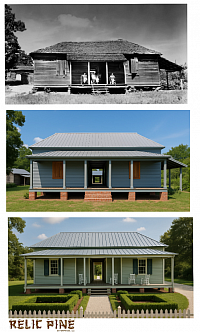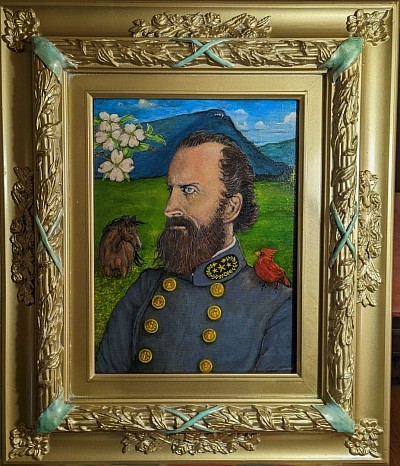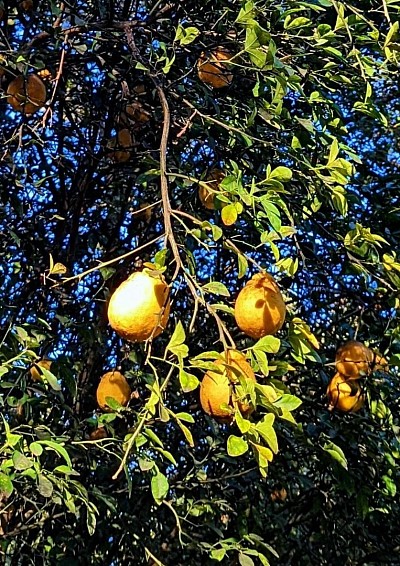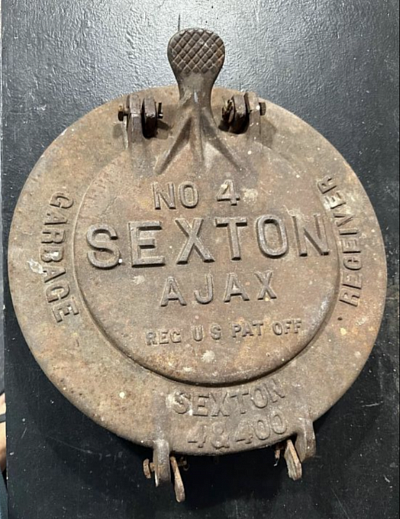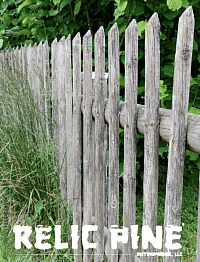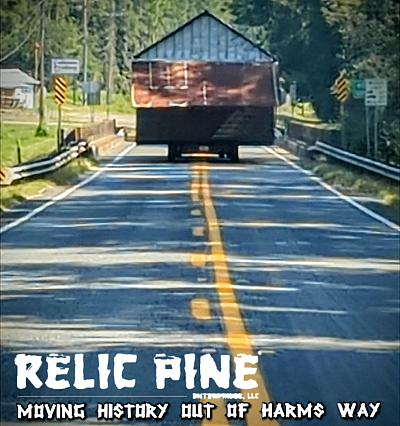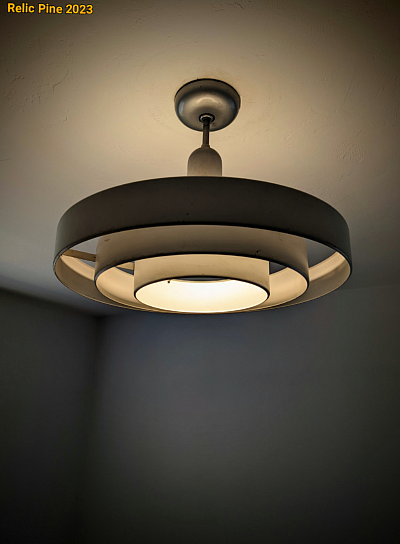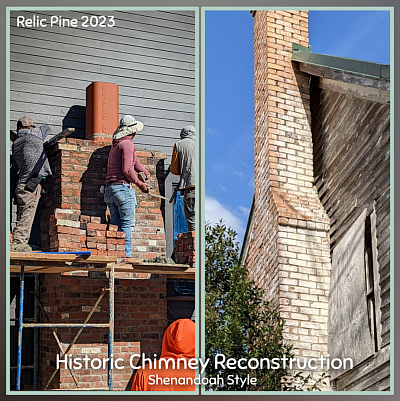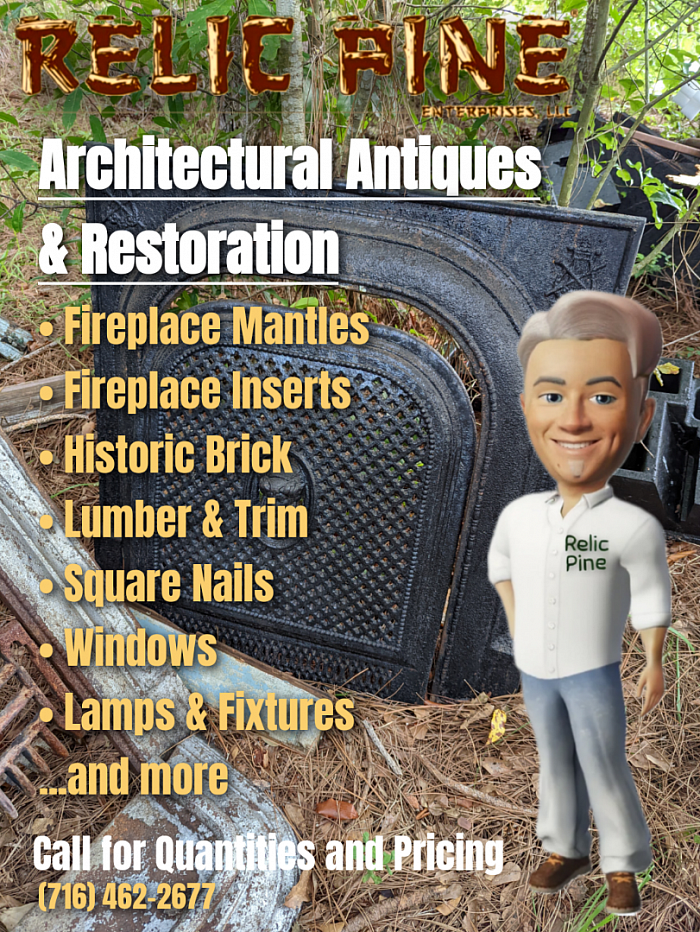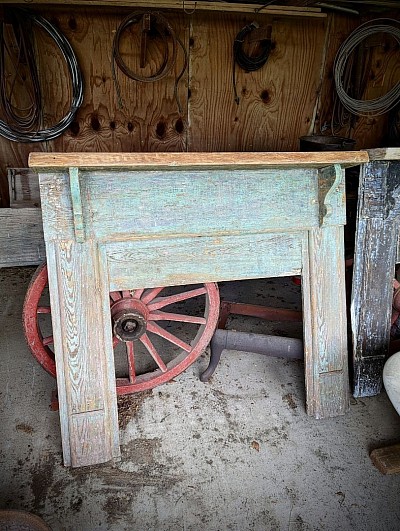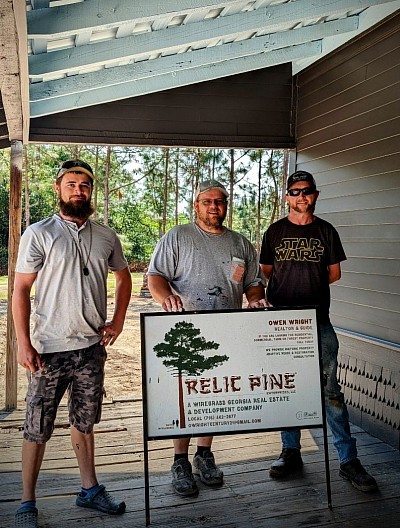Relic Pine's Rambling Blog
Going Cracker™
Relic Pine Enterprises LLC and the Revival of the South’s Most Enduring House
By Owen Wright
In the heart of the Deep South, where longleaf pines stretch skyward and hammocks cradle quiet streams, a new preservation movement is taking root. At its center stands Relic Pine Enterprises LLC, a firm dedicated to a singular mission: to “Go Cracker.”
The phrase is more than a slogan. It’s a call to rediscover the architectural soul of the South — the humble yet ingenious Cracker House. Once dismissed as relics of poverty or frontier roughness, these dwellings are now being recognized for what they truly are: timeless testaments to resilience, ecology, and craft.
What It Means to “Go Cracker”
To “go Cracker” is to return to authenticity. It is to step away from the disposable landscapes of sprawl and rediscover a wisdom carved in pine beams and tin roofs. Relic Pine interprets the phrase as both scholarship and craftsmanship: poring over archival surveys, salvaging forgotten timbers, listening to families who grew up under their porches, and then breathing life into structures once abandoned to termites and weeds.
“We’re not just restoring buildings,” says Owen Wright, founder and managing director. “We’re reviving a way of life that understood climate, community, and continuity. The Cracker House wasn’t just shelter — it was survival architecture.”
Roots in Pine and Cypress
The Cracker House traces its lineage to Florida, Georgia, and Alabama settlers of the 19th century. Raised brick piers lifted houses against floods and pests. Broad porches offered shade. Dog-trot breezeways funneled the faintest summer breeze. Roofs of tin or cypress shingles shed storms with stoic ease.
They were homes attuned to place, crafted from what the land offered: pine heartwood, cypress boards, lime mortar, tabby concrete. In an era long before air-conditioning or building codes, they embodied vernacular genius — the original sustainable architecture of the South.
Relic Pine’s embrace of this tradition reframes the Cracker House as a model for modern living. To go Cracker, the firm argues, is to honor ecological wisdom while reimagining it for a world that still battles heat, flood, and fragility.
The Research Behind the Revival
Relic Pine’s work begins not with nails, but with notebooks. Each project is grounded in rigorous research:
Archival Studies uncover forgotten WPA surveys and fading photographs.
Field Documentation records the last weathered houses before they collapse into memory.
Material Science tests lime mortars, pine resin, and century-old joinery.
Oral Histories capture voices who remember growing up barefoot in breezeways, shelling peas on porches, and sleeping under mosquito nets while rain drummed on tin.
This foundation ensures that every Relic Pine project balances authenticity with modern building standards, blending old wisdom with contemporary resilience
The Origin Approach™
Relic Pine’s philosophy, known as the Origin Approach™, ensures that no restoration is generic. Every project integrates three guiding principles:
1. Design Integrity — Respecting the true forms and proportions of the original house.
2. Material Faithfulness — Choosing historically accurate timbers, mortars, and finishes.
3. Heritage Adaptation — Finding modern uses for old forms while preserving their spirit.
The result is a spectrum of projects: a turpentine foreman’s cottage reborn as a weekend retreat, a two-room dog-trot rebuilt from archival plans, or a Cracker House adapted into a gallery where sunlight filters across salvaged pine floors.
Reclaiming a Name
The word “Cracker” has long carried mixed meanings — sometimes a slur for poor frontier folk, sometimes a badge of backwoods toughness. Relic Pine aims to reclaim the dignity of the name by showing what these houses — and their builders — really represented: independence, resilience, and ingenuity.
“To say you are Going Cracker with Relic Pine,” Wright explains, “is to celebrate heritage over haste, to embrace Southern craftsmanship, and to invest in a future that remembers its roots.
More Than Nostalgia
In an age where development often bulldozes history, Relic Pine’s mission carries both urgency and hope. Every Cracker House restored is a bridge — between past and present, between scholarship and craft, between memory and legacy.
At its heart, “Going Cracker” is not about nostalgia. It is about purpose.
Researching the past. Restoring the spirit. Rebuilding the legacy.
That’s the work of Relic Pine Enterprises LLC — one Cracker House at a time.
Contemporary Southern Decorative Arts in the Folk Tradition
Relic Pine gladly supports the arts, particularly original works produced in the Southeastern United States reflecting, primitive, traditional, and classical styles. Our team is primarily known for preserving early Southern decorative arts; repurposing antiques coincides with our philosophical view of regional architecture. On the other hand, contemporary Southern decorative art continues a long tradition of innovative craftsmanship found within the South (furniture making, sculpture, painting, forging, flint knapping, woodworking, quilting, etc.)
This commissioned work was completed by a Georgia folk artist and dedicated on 21 January 2024 to commemorate the 200th birthday of Thomas J. Jackson of Virginia. His exploits and devout integrity have earned him the honor and respect of countless people around the world; a truly good, honest, and honorable American.
Medium: Oil on Canvas
Title: Peace in the Valley
Class: Folk Art
Signature: Inscribed on Back
The painting depicts Thomas Jackson in the Shenandoah Valley; in the background one sees dark clouds forming north of Jackson Mountain (originally named for Andrew Jackson). On the left stands Little Sorrel amid wildflowers, minus the accoutrements of war. Above are the blossoms of the dogwood, the state tree of Virginia. On Jackson's shoulder rests a gentle and curious cardinal, Virginia's state bird.
The hand-gilded frame is adorned with muted dogwood blossoms surrounding bundled rods, known as a fasces. The fasces is draped in laurel, representing Jackson's military victories, and cloaked in a blue ribbon which serves to mourn the untimely loss of Jackson as well as pay homage to The Stonewall Brigade, a valiant infantry regiment of the Army of Northern Virginia.
The artist has portrayed Jackson at peace in one of the most beautiful and historically rich landscapes found within his native Virginia; "it was for peace that Jackson fought so hard." Jackson loved the Shenandoah; here, he faithfully prayed, enjoyed an occasional lemon, and strategically, offensively, and successfully defended a civilian population from the ravages of a well-equipped politically-charged war machine. This event is remembered as The Valley Campaign.
In the coming years we are certain this unique work of art will find a place of significance among historians, collectors, and museum collections.
FLORIDA HISTORY ON THE PEELThe Unexpected Discovery of a Heritage Landscape
Relic Pine's Managing Director had a very rare opportunity to assess a very old and very isolated homestead in Central Florida this week. The historic buildings are now gone but its value as a Florida history and heritage site could not be greater. In this case the importance lies within a rare landscape consisting of large stands of native grandiflora surrounding an antique orange grove.
Envisioned by an early conservationist, the grove was planted in 1904 to test several growing techniques he had been experimenting with. Abandoned after his death, the property was strangely overlooked by out-of-state developers and the rampant spread of regional urbanization. The resulting oversight has led to the accidental preservation of one of the rarest and most ecologically diverse landscapes seen in this part of Florida in quite some time.
Surrounded by 500 to 600 year old twisted Live Oak, alligator infested swamps, and forgotten archaeological sites, the orange grove recently revealed itself to its new owner, a Native Floridian with strong ancestral ties to the area. Carefully cleared of tangling vines and thick stands of understory, the resulting return of nurturing sunlight caused the grove to shake off its dormancy and flourish once again.
After close inspection a collection of heritage orange varieties were soon discovered, including a small stand of fabled Amber Sweet Orange trees. The Amber Sweet is a rare and once popular variety that has not been seen in over 50 years. Upon learning of the discovery, scientists from the University of Florida and the University of Georgia rushed to the site to document the orange trees and take samples for further study. These teams are now monitoring the grove and working to reveal the secrets behind its surprising survival.
To date, survival of the Amber Sweet trees is believed to have been attributed to four key factors: (1) the grove was never treated with commercial fertilizers; (2) it was regularly composted with tobacco leaves for most of its active life; (3) a species of small snail was introduced to reduce mold and bacteria; and (4), the presence of native Live Oaks, which add an antibacterial agent to the surrounding soil. Scientists further surmise that after abandonment the grove quickly became overgrown with native shrubs and vines; this growth served to blanket the trees, further protecting them from destructive freezes that hit Central Florida in the 1950s and 1960s.
Uniquely pear shaped, the sugar content (brix) is much higher than its acidic level, possibly making the Amber Sweet the tastiest orange ever grown in Florida. The skins are thick and very sweet and were once used as a popular garnish in Old Florida cocktails as well as the key ingredient in a delicious orange cello.
This beautiful tract, whose landscape could provide a romantic backdrop to a classic Southern novel, is now protected by man as well as nature. Newly established conservation efforts will serve to maintain this Florida treasure in perpetuity and perhaps result in the limited return of the Amber Sweet from the pages of Florida history to a tasty fruit salad near you.
We certainly hope so.
GARBAGE CAN NOT GARBAGE CAN'T
Quite often Relic Pine's Acquisitions Team stumbles across an historic oddity that deserves further investigation. A recent Massachusetts find certainly got the wheels in our heads turning. Forged from cast iron, the object resembles a ship's port hole with a foot pedal attached. We quickly deduced that the strange object was an early garbage can lid. Since the piece was marked, it gave us a good foothold to begin some additional research.
To fully understand history or a historical artifact, one must be able to interpret new data through an historic filter, minus the biases we find ourselves suppressed with today. In this case, we must first correctly interpret the term "garbage". In the 19th century and the first portion of the 20th century, "rubbish" was considered dry trash that was commonly tossed in metal pails for curbside pickup — much like today. "Garbage", on the other hand, consisted of food scraps and organic material — all the gross wet stuff.
Garbage was originally hauled away on open wagons and fed to pigs. As urban populations increased, safe and convenient disposal of the organic sludge became a growing concern; this material was prone to wafting smells, an army of pests, and regular complaints. With very few efficient long-term disposal options, temporary on-site storage seemed like the only solution. In response, J.P. Jones of Somerville, Massachusetts designed a garbage receptacle that could be hidden away until it could be dealt with. He patented his first version of the subterranean receiver in 1911.
Storing the garbage underground kept it a little cooler, and a heavy cast iron lid kept rats from getting into it. And while it didn’t eliminate it, it did help to reduce the awful smell, and it also helped reduce attraction from flies and maggots. With subterranean receivers in place, garbage men would come through twice a week, house-to-house, to pull the heavy, garbage-filled, metal bins up from the ground, lugging them from the backyard to the garbage truck at curbside, emptying them, and then returning them to their barrel shafts. The only flaw in Jones' design was the intrepid Raccoon (Procyon lotor) and its uncanny problem solving skills; many older Americans remember the muffled clang of the iron lid around 2 o'clock every morning as the four-legged bandits returned for an easy meal.
While the subterranean receiver did move the needle a little, the real game changer for garbage disposal came in the 1960s with the advent of the plastic trash bag. Trash bags allowed garbage and rubbish to be placed in the same curbside bin. In later years, before their widespread removal, the subterranean receivers were used to hide certain forms of domestic contraband not normally allowed in the household (i.e., booze, beer, cigarettes).
CORPORATE HISTORY: The Evolution of the Patent and its Trademarks.
In 1867, James A. Sexton of Chicago, Illinois became involved in the foundry business and opened the Sexton Manufacturing Company. Later the company partnered with Henry Cribben to form one of the largest wood and coal burning stove manufacturers in the country. In 1903, Cribben, Sexton & Company diversified its product line. James continued to diversify his foundry interests until his death in 1899. Afterwards, his sons Stephen and William continued to invest in manufacturing operations within the region.
The AJAX Manufacturing Company of Cleveland, Ohio was incorporated in 1875 by John Rollin Blakeslee. Blakeslee had earlier operated the Blakeslee Manufacturing Company which manufactured nuts, bolts, rivets, and pins. Sexton Manufacturing merged with AJAX around 1902. Under this new arrangement, the Sexton-AJAX Manufacturing Company (Sexton-AJAX) began to focus on iron forging machines and by 1910, the company had constructed the largest of its kind.
F.B. Jones Manufacturing Company was formed in Somerville, Massachusetts in 1910. Here, Jones' workforce mixed the concrete for the barrel shafts, manufactured the metal bins for the barrel inserts, and heavy lids emblazoned with the company name. Demand increased as northeast and midwest municipalities began ordering thousands of units. To meet this demand, F.B. Jones partnered with Sexton-AJAX to create the SEXTON-AJAX Can Company, a technological and distributional conglomerate of the two corporations.
The SEXTON-AJAX Can Company was located in Boston, Massachusetts and was responsible for making a variety of metal cans and can liners, including gas cans and iconic metal rubbish cans that were once commonly seen on nearly every curb after 1960. Today this company exists as ITW Sexton and is considered the world leader in the production of two-piece steel containers and deep-drawn oil filter shells.
Remembering Natchez, Mississippi
This post is a recollection of Relic Pine's Managing Director. Transcribed from a conversation in October 2023.
Have you ever stopped to remember about the series of events and experiences that brought you to the point you're at today? I never used to but the older I get the more I find myself doing it.
Years ago I served as head field archaeologist for a company in Natchez, Mississippi. I had just finished two large pipeline projects and welcomed the more relaxed pace the local smaller jobs provided. This was a simpler time, before the nefarious gambling barges came to town, and I didn't have enough sense to realize it until the very end. This was what I now refer to as the "ideal time" when Natchez was still kind, quiet, and peaceful; heck, the only real "disturbance" was when the Delta Queen would paddle under the bluffs of the city playing its cheerful steam calliope on its way to New Orleans. Now how bad is that?
These were the days when everyone knew each other in town and nodded or waved when passed on the street; it was very Mayberry-like. When the tourist buses came to town reenactors would suddenly appear out of the local population to talk of Antebellum life in the old river town as well as share the legends and lore of the old homes and haunts dotting the Natchez Trace.
Historic Preservation in the United States began to blossom early in Natchez. The National Park Service spent years documenting every detail of the town, its buildings, its homes, its streets, and its people. What a marvelous place to be. My years there resulted in my becoming a welcomed local; an honor very few outsiders have earned. I still proudly carry that badge today.
This land and its people remain steeped in history and pride despite the careless disruptions now caused by politically driven agendas bent on a perceived federalized correctness. When I was in Natchez this unrest was merely whispered here say. Like most towns along the Mississippi River, political lines faded a bit as the sun began to set over the river. "Bullbat Time" having finally arrived, everyone adjourned to the nearest shady veranda to sip a cocktail with friends and toast the good Lord for another beautiful day. Bullbat Time was not a social event of the season it was the social event of the day.
My office was located in a little rehabilitated historic home at the intersection of South Broadway and State Street. It's a vacant lot now, but my office was near the entrance to Silver Street, which led to the restaurants and shops under the Hill along the river. On hot summer days our air conditioner would occasionally go on the fritz resulting in all the sashes being lifted to let the river breezes in. It was on those sultry days that I would catch myself gazing outdoors away from my typewriter....the reports would eventually get done. My favorite distractions were the daily melodies drifting upward from the passing Delta Queen and the sweet shrill calls of the approaching Praline Lady.
Pronounced "prah-leans", these sweet treats soon became a welcomed habitual ritual. Natchez's Praline Lady would stop calling as she approached my open window. She would always say "good day, Mr. Owen, God treat'in you right?" I'd always greet her with a smile and a "yes" then offer her an ice water or tea to belay the effects of the sun and heat. This was how I got to know her and what a true praline should taste like. Occasionally I'd leap out my office window, buy a praline, toss it on my desk, and walk with her as she made her way to the nearby tourist haunts. When she'd start selling to a crowd I'd depart with a wave and get on with my day.
She was very kind and certainly made the best pralines north of New Orleans; it's not only about taste, it's also about texture. I bought them regularly despite her offer to give me a couple for free each day; those things were perfect when accompanied with a cool bourbon on a shady veranda. I'd often grab one out of my shirt pocket at Bullbat Time.
As my memory fades into an echoing mist, I remember sometimes seeing her at the end of the day sitting under the Hill on an old reclaimed church pew beneath a metal awning fanning herself with an bent funeral home fan depicting Jesus, her basket empty or nearly so. She'd always call out to me to come sit a spell and get out of the heat. I would generally take her up on her offer to hear about her day, topics on religion, or about her life in Natchez. To her, the people in that town were so nice. She loved her home and family and thanked God for her great grandmother's praline recipe. There was no hate found there nor was the evident racism you hear spouted on the nightly national news. Life was good.
Again, this was a simple and quiet time in Natchez history. There was no hustle and bustle; there was no need to be in a hurry. There were no strangers and no time for hate.
I certainly miss those carefree days
PROTECTING THE INTEGRITY OF SOUTH GEORGIA: Without Our Past We Have No Future.
Southern Georgia has long been the home of a unique culture stemming from Celtic, German, African, and Native American roots. This culture extends across 41 counties and is associated with a unique collection of traditional arts. These regional traditions span a geographic scope that includes the southern tier of the Sea Islands, the Okefenokee, and the Wiregrass. These shared traditions include food procurement, recipes, tool making, decorative arts, music, and architecture. From its frontier beginnings, the various cultures that entered this land banded together quickly for their survival, prosperity, freedom, and enjoyment; they learned to depend on and trust one another to create the rare communities we see today.
Relic Pine Enterprises, LLC was originally formed to preserve the nuances of South Georgia culture through the restoration and adaptive reuse of historic architecture. Our goal is to find new uses to inspire a new generation of American frontiersman while preserving the native integrity lying along meandering dirt roads and deep Longleaf Pine forests.
Whether you are looking for a quiet life away from the urban rat race in a safe small town, a wooded hunting retreat, or an off-grid homestead surrounded by rich soil and clean water, our team can assist you with the transition.
We will be more than happy to provide
• Property searches;
• Real estate services;
• Historic architecture procurement;
• Restoration & rehabilitation design;
• Historic landscape design;
• Off-grid technology assistance; and
much, much more.
We are South Georgia's sole source for historically inspired residential and commercial innovation. We have the native intelligence to remove the guess work.
Visit our website or follow us on Facebook to learn more about our services and accomplishments.
https://relicpineenterprises.simdif.com/
Local (716)462-2677
Need a speaker at your next function? Make an appointment with our Managing Director, Owen Wright, to discuss an array of topics related to South Georgia history and heritage.
Relic Pine has recently taken steps to save an 1870s Wiregrass Georgia barn from demolition by neglect. The remaining structure associated with a long forgotten homestead, the barn was sitting in the mud within an active cattle feed lot. Our team stabilized the structural matrix and raised it from the earth in preparation for a quick move. The barn was brought to our Project Site where it was reset on native stone piers..."high and dry.'
Now to decide its future. Our team may decide to restore and put it back into use as a barn....or we may surprise our followers with a completely different approach. The bottom line is it will retain its visual integrity within a restored context.
Kurt Versen Saturn Ceiling Lights
Kurt Versen was born in Sweden in 1901 and after studying in Germany settled in the United States in1930, where he was soon asked to complete a line of lamps for Lightolier for stores, offices, and public buildings; this line included an early version of indirect lighting for the 1931 Philadelphia Saving Fund Society Building which led to a commission at the 1939 New York World’s Fair. In the 1940s and 1950s, Versen executed many assignments from architects for flexible lighting appropriate to Modern interiors. His swivel floor lamp of 1946 could be used for both direct or indirect lighting. Innovation led to his lamps being debuted at the 1951 Good Design Exhibition at the New York Museum of Modern Art.
Of his designs, no other better reflects the Mid-1950s Atomic Era than the "Saturn" pendant ceiling light. The design features stacked steel rings suspended by hidden wires; a central diffuser shade serves to disperse light evenly to each ring from a single socket. These ceiling lights are usually called UFO or “Saturn” lights, due to the Saturn-like illumination of the rings.
Most connoisseurs of contemporary decorative art agree that the "Saturn" pendant ceiling light serves as an excellent bridge between the Art Deco Industrial and Mid-Century Modern design periods. The design follows the strict “form follows function” dictates of the Bauhaus School. These lights were once common in institutional settings with high ceilings and lots of space, such as schools and office buildings.
Relic Pine acquired two examples of Kurt Versen's Saturn pendant lamp several years ago on a trip to California. Each lamp base is painted with a baked flat gray enamel. The three ringed stainless steel shades exhibit a baked flat white enamel. The rings have 9, 12, and 14 inch diameters and drop downward 1/4 inch from outer to inner. The total ceiling drop was 16 inches but was reduced to 12 inches due to the ceiling heights associated with the current 1955 Ranch House Project. These lamps were chosen to greatly enhance the homes Mid-Century appeal. Placed in bedroom settings, each brings a sense of Space-Age elegance, paying homage to Versen's unique talent and design diversity.
With the lights in place, we now believe each bedroom would certainly be at home on the Starship Enterprise.
Resurrection of an Historic Chimney Design
The Project House chimney design harkens back to 1860s Georgia when innovative brick laying techniques began filtering southward from Virginia and North Carolina. Our team is reproducing an arrangement used widely in Virginia's Shenandoah Valley between 1845 and 1860. The shoulder corbeling is defined by a 180° soldier offset prior to upward narrowing.
This historic chimney design can be seen locally in association with a Wilcox County home built in 1867 by a Virginian who relocated to the Georgia Frontier after losing everything to the ravages of war. The site and surrounding viewshed reminded him of home.
Corporate Commitment to Wildlife Habitat
Did you know that Relic Pine Enterprises, LLC incorporates Bobwhite Quail habitat restoration into many of their landscape design plans?
Our Managing Director regularly emphasizes that "Historic architectural integrity should always align with the sounds of nature and the integrity of space."
The call of the Bobwhite speaks to the soul.
More on Historic Brick
Historic Brick Reminder
Clay bricks come in a variety of sizes, densities, colors, and textures. As such, placing an order for a pallet of "old brick" can be a costly mistake without first conducting a thorough examination.
An old brick isn't just a brick.
This morning we received a delivery from a reputable dealer that had to be returned despite their insistence that the bricks were the same as our previous order. Their inventory obviously uses the same skew number for the historic brick they purchase from regional providers. Their database provides no differentiation in the characteristic features of the brick. In our case, the initial order was a higher fired machine pressed brick commonly produced between 1880 and 1910. It exhibits a rectangular indention and is about 1/2 inch longer than a standard brick; end-grain colors range.from medium pink to light red.
The brick delivered and returned were of a standard size (8" x 4" x 2"), hand pressed in a wooden mold (1850 - 1880), and had a color range from medium orange to a buff tan. These obviously received a lower firing temperature and would not withstand the rigidity of our Portland Cement based mortar. Lower temperature bricks require a sand-lime mortar only. If we had chosen to use them, there would have been a clear visual transition on the chimney surface and a 99.9% chance of structural failure (spalling).
Despite the new delay, Relic Pine is committed to quality and durability. We will not accept inferior substitutes despite an "old" or "historic" designation.
Regretfully, our Project House chimneys will have to be completed when our supplier finds the brick with the strength and characteristics we require.
C'est la Vie.
A Word About Architectural Archaeology: Milk Paint
After the careful removal of numerous layers of nasty oil based paint we were able to finally reveal the original color of parlor mantle. Built from material left over from the house construction, the mantel was designed using hand-planed heart pine lumber. When complete, a batch of milk paint was mixed with natural pigments to add a bit of color to the interior space. Following a house-wide historic paint analysis, Relic Pine found where this same light blue milk paint was used on the ceiling of the dogtrot.
A Word on the Use of Milk Paint in Rural Wiregrass Georgia
In Colonial America itinerant painters roamed the countryside carrying pigments with them, which could be mixed with a farmer's or householder's own milk and lime. Often, the itinerant painter would be a tinker or farrier, or have some trade in addition to his knowledge of paint. Practically every household had their own cow or goat, and each community had its own lime pit. Even though there exist many examples of early American furniture that was painted with some form of oil paint, the look associated most widely with the country homes and furniture of the 17th, 18th, and 19th centuries is that of the soft velvety, rich colors of milk paint. This colonial practice continued along the Wiregrass Georgia Frontier into the first decade of the 20th century, ending around 1910. From this point mass-produced oil based paints were becoming more readily available to the general public.
Once fully restored, Relic Pine's Design Team will ensure that this same shade of blue will be returned to the mantle and other restored heart pine features within the parlor space. We refuse to obscure the beautiful grain of the old growth Longleaf Pine.
Promoting Talent and Staying Local
The Relic Pine Architectural Design Team want to give a huge shout out to Taylor's Painting & Home Repairs LLC for the fantastic job they did bringing the Project House exterior concept to life. Great care was given to every phase of the painting process. Arriving early every day and staying late until the daily goals were complete, their approach ensured a clean fresh positive start every morning.
The final walk through was a breeze; fly specking was simplified by stellar communication throughout the entire process. We look forward to having David and his team back again soon.
We should note that Mr. Owen indicated afterward that "it was a sad sight to see them leave, Mr. Taylor can make it happen".
Great job!!
